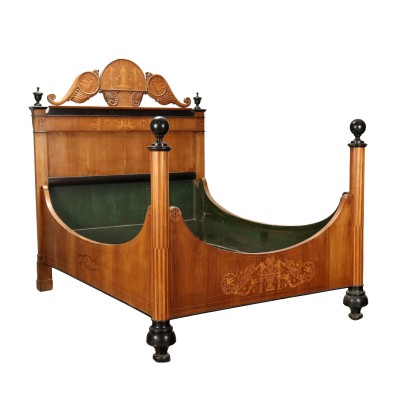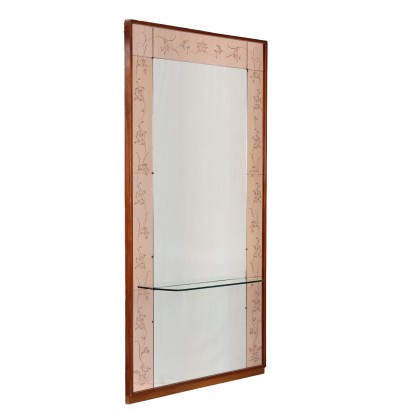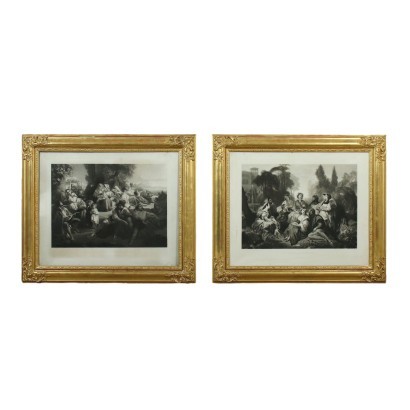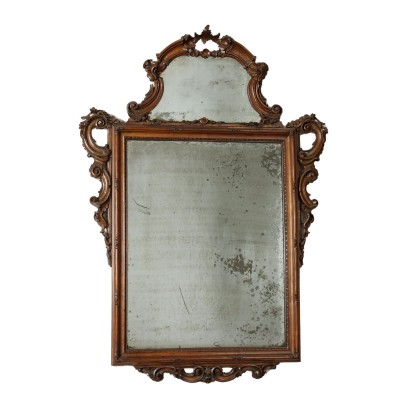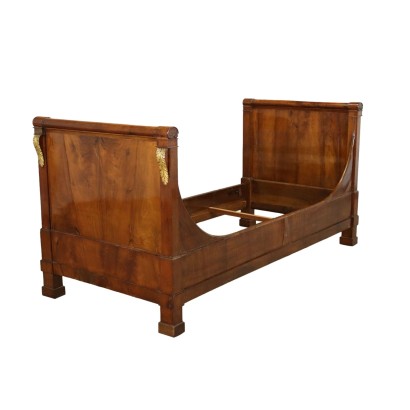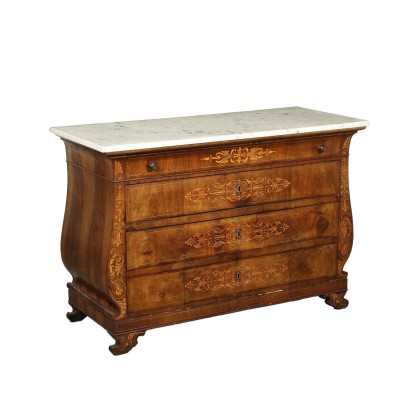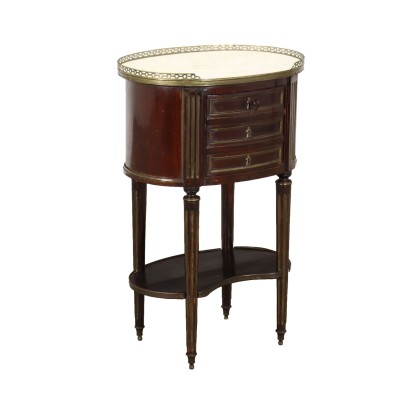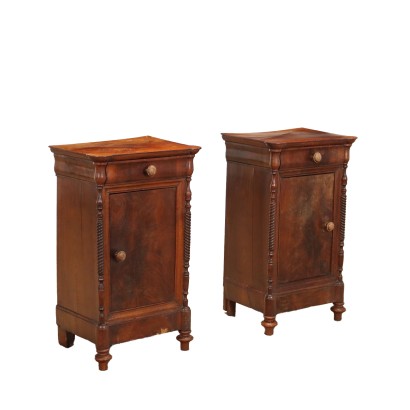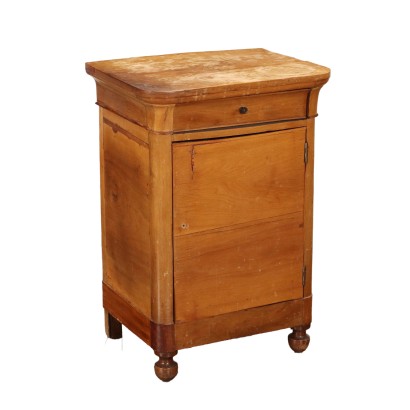Charles X Double Bed Cherry Italy XIX Century - Second Fourth XIXth Century
Features
Second Fourth XIXth Century
Style: Charles X (1824-1830)
Age: 19th Century / 1801 - 1900
Origin: Italy
Description
Charles X bed, the uprights of the headboard are plinth-shaped, crowned by vasiform elements, while those of the footboard are turned and with spherical elements; the cymatium of the headboard has a central medallion inlaid with a mythological figure, flanked by a pair of medallions with birds, supported by supports carved with characteristic motifs; veneered in cherry and striped walnut, it is decorated with phytomorphic inlays inhabited by mythological figures.
Product Condition:
Product that due to age and wear requires restoration and resumption of polishing.
Dimensions (cm):
Height: 55,5
Width: 148
Depth: 203
Bed frame maximum sizes (cm):
Height: 195
Width: 166
Depth: 222
Certificate issued by: Enrico Sala
Additional Information
Style: Charles X (1824-1830)
Referring to a very short period, the Charles X style denomination is nonetheless significant because it allows us to detect some specific elements of the taste of the time.nIt can be considered the last phase of the stylistic research of the Restoration, in which bourgeois requests and needs are welcomed, and opens up to a taste for the Gothic.
nCharacterized by wavy and wavy lines, which oppose the more squared ones of the Empire, it mainly uses light woods with darker threads and very few metal applications.
Age: 19th Century / 1801 - 1900
19th Century / 1801 - 1900Main essence:
Cherry
Obtained from prunus cerasus , a plant of oriental origin, it is a hard wood with a light and delicate color, with a reddish vein. Due to its diffusion and availability it was used in Europe in popular furniture. In cabinet making, in the seventeenth century, it was widely used in France and England for inlay work. In Italy it was very successful in Lucca. It was also very popular in the United States for the manufacture, from the late 1600s, of commonly used furniture.The dictionary of antiques: Eclecticism
Classic Monday: a sofa from the 1800s example of eclecticism



